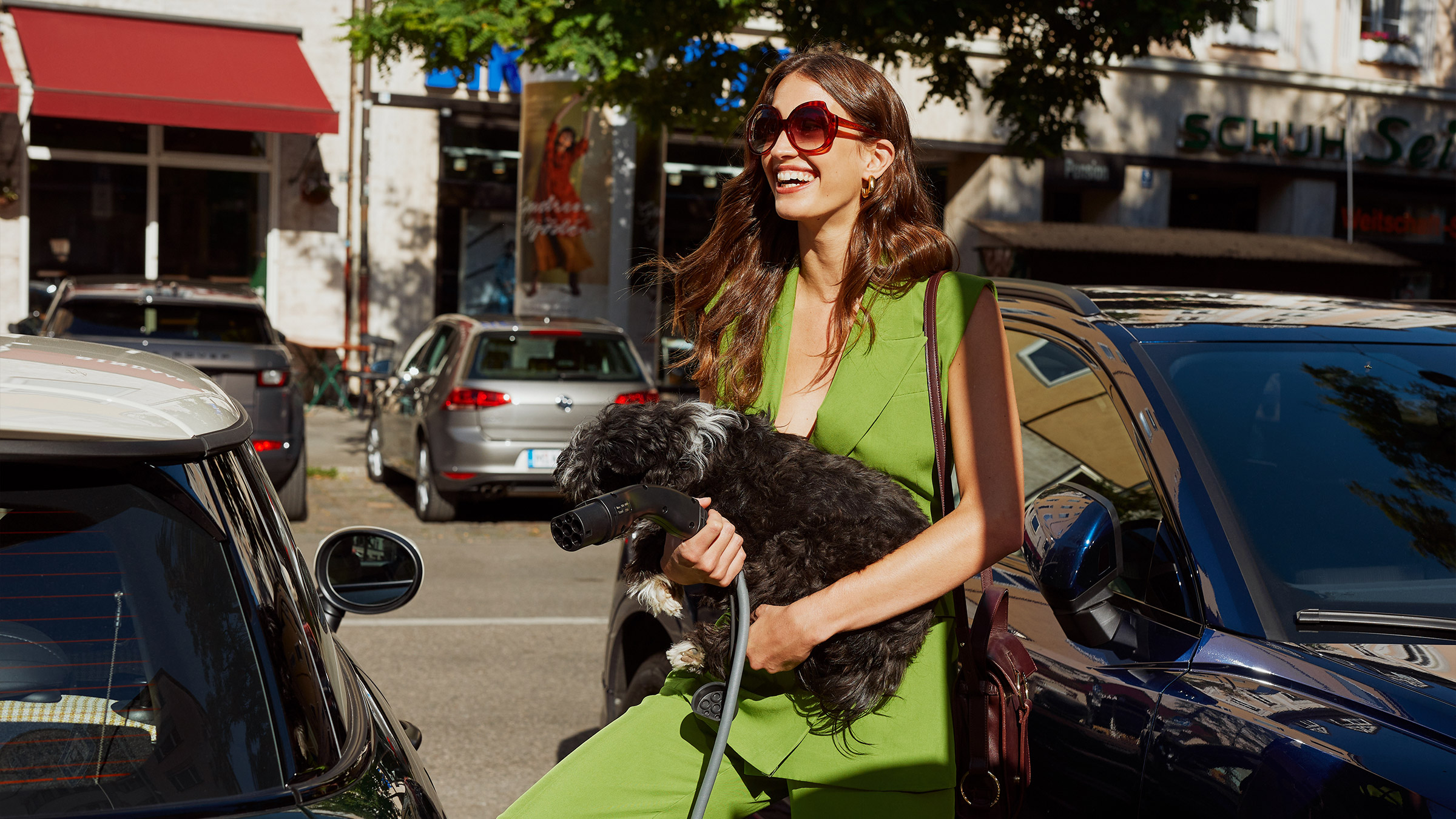Powering the Future of Sustainable Mobility
Major urban hubs have dense and growing populations that strain the existing built environment and infrastructure, contributing to road congestion, air and noise pollution and greenhouse gas emissions. While electromobility and the digitalization of traffic are relevant for all cities to combat their common transportation issues, unique challenges arise in the implementation of solutions, depending on the local infrastructure and public sentiment.
BMW Group is working with some of the world’s most connected and populous hubs, including Los Angeles, Berlin, Munich, Rotterdam and Beijing, to explore how these cities can meet the mobility needs of their residents sustainably.
Common challenges, different solutions
“We take a holistic view on sustainability, from our clear goals for our production network, supply chain and our products, to making the ecosystems where our products are used more sustainable,” says Dr. Thomas Becker, Head of Strategy Sustainability and Mobility at BMW Group. Becker points out that while major cities have common challenges, they need to be analyzed individually. “Understanding their specific mobility needs is crucial to be able to shift mobility patterns toward sustainability,” he says.
The travel pattern in a multi-hub metropolis like Los Angeles is completely different from that of a city like Munich, where the urban center is a square mile, says Becker. That’s why BMW Group, together with the Karlsruhe Institute of Technology (KIT) and the University of California, Davis, is conducting a mobility survey in parts of LA County to understand the area’s car dependencies and mobility needs. Based on the results of this study, the group plans to explore possibilities with local stakeholders to address LA’s long standing air pollution and congestion issues.
“We firmly believe that climate protection and quality of life in cities can be achieved through innovation,” says Becker. “It is also crucial to offer people living in and around cities a wide range of mobility solutions that meet their demand.”
Private vehicles and the urban transport mix
Many urban dwellers and commuters continue to rely on their vehicles to travel in and out of cities. Research conducted by BMW and the Karlsruhe Institute of Technology into the mobility needs of Munich residents reveals that 40% of car owners rely on a private vehicle on a daily basis. The remaining 60% of car owners in Munich are already frequent users of other transportation modes as well, like cycling and public transport.
“For commuters, it is about getting in and out of the city. Once they’re in Munich, they don’t necessarily require a car to move the last few hundred meters to their destination,” Becker explains. “Multimodal options can optimize the user journey, helping commuters find the right offers at the right time through on-demand mobility apps or in-car integration.”

Digital, demand-based urban transport
Giving people the option to choose the most efficient means of transportation for their needs can help manage congestion and delays, especially during rush hour. This is where digitalization can help move people more quickly and efficiently, with transparency that includes availability, congestion, prices and public transit timings.
One example is a joint venture between BMW Group and Daimler Mobility (now Mercedes-Benz Mobility AG) that led to the 2019 launch of Europe’s largest multimodal mobility “super app,” FREE NOW. With ride hailing at its core, the app offers more than 73 million users in 150 European cities different mobility modes, brands and payment options, so they can easily book the nearest taxi or shared car as well as micro mobility options such as e-scooters and e-bikes. Through real-time collaboration with partner networks, the app efficiently books all these vehicles on one platform, helping to meet complex urban mobility challenges. Recently, FREE NOW integrated its first public transportation partner in Germany, and further collaborations are planned all over Europe in the near future.
The expansion of emission-free zones
Connected electric vehicles can contribute to emission-free city centers, as demonstrated by the “e-drive zones” established in over 130 European cities. Within these zones, BMW Group’s plug-in hybrid electric vehicles (PHEVs) automatically shift into electric mode; this project was developed together with Rotterdam city authorities and Erasmus University to explore how digital features can boost the electric mileage of PHEVs to the maximum, where it is needed most.
“The partnership with BMW Group is important to us to learn more about the role of vehicles in Rotterdam in the future,” says Richard van der Wulp, Senior Policy Advisor and Urban Traffic Planner at the Mobility Department, City of Rotterdam. “Together with BMW, we explore how vehicles can contribute to making the city more livable and learn how we can steer mobility behavior in a positive way.”

Addressing barriers to EV adoption
According to BloombergNEF’s Zero-Emission Vehicles Factbook, cumulative global investment in EV charging hardware and installation in 2022 reached $28.6 billion, up 228% from 2021. Even so, charging infrastructure continues to be a key EV pain point because it can be difficult to find a vacant charging station, and they tend to be occupied for longer than necessary.
Despite having more than 3,500 charging stations and five large charging sites, Rotterdam is facing this issue. A pilot app jointly developed by BMW Netherlands and the city found a way to optimize its charging stations. The app alerts users as soon as their vehicles are fully charged, and allows them to reserve other parking spots to seamlessly move their vehicles and make charging stations available to others.
Making bidirectional green charging ubiquitous
Digitally connecting charging infrastructure can also facilitate green charging. Renewable energy sources like wind and solar are volatile and can lead to “grid congestion” or bottlenecks at unpredictable times. Vehicle-to-grid technology could help alleviate grid congestion—and minimize the need for expensive grid infrastructure upgrades—through bidirectional charging, where fully charged EVs feed energy back to the grid.
BMW Group partnered with Rotterdam in a pilot project in the city’s “living lab”—Kleinpolderplein, the main fleet management site in the city, where electric garbage trucks and more than 60 communal electric service cars are charged daily. Garbage trucks have large, 350 kWh batteries that often have to charge simultaneously at the end of their shifts. This requires a lot of power for a relatively short period of time, which strains the municipality’s existing infrastructure. The city used two BMW i3 cars in the pilot project, so that when heavier EVs, like garbage trucks, were being charged, the i3s supplied power to the site’s energy grid. The bigger picture reveals the potential for this technology to mitigate power cuts and grid overloads in cities.
“It’s about identifying needs, testing what is possible and then trying to roll that out,” says Becker. “Our collaboration with the city of Rotterdam is an example of how—after measuring the success of our multiple pilot projects—we seek to analyze in depth which solutions would work, and how people are open to contribute to a more sustainable system.”

Collaborating for a sustainable future
While new mobility technologies will continue to enter the market to move transport innovation forward, making urban transportation more sustainable requires integrating administration, infrastructure and urban development, and including the participation of communities.
“Sustainable mobility is a social process that requires collaboration with a wide range of players. Urban planning and transportation planning need to be integrated,” says Becker “It’s crucial to fully understand the mobility needs of city dwellers; this is why we are engaging with neighborhoods through two different approaches. We start by cooperating with stakeholders like mayors, transportation planners, urban planners and local academics to identify possible new concepts and solutions. At the same time, we engage with local communities at the bottom-up, neighborhood level because their mobility needs must be met,” he says. “If we all contribute with our experience, we can develop new integrated and needs-based solutions for urban transportation.”

